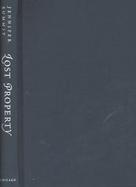Lost Property the Woman Writer and English Literary History, 1380-1589
- Binding: Hardcover
- Publisher: Univ of Chicago Pr
- Publish date: 06/01/2000
Examining the history of the representations of women writers from Margery Kempe and Christine de Pizan to Elizabeth I and Mary Stuart, Queen of Scots. Summit shows how the woman writer came to embody alienation from tradition. Chaucer, for instance, used the figure of the woman writer to dramatize the problems of writing outside the dominant literary culture, while the Reformation writer John Bale cast women writers as proto-Protestant icons of opposition to the Catholic church.
Bringing together original archival research with new readings of key literary texts. Summit provides a revisionary account of the woman writer's role in English literary history.
| Seller | Condition | Comments | Price |
|
Websew.com Inc
|
New |
$122.02
|


